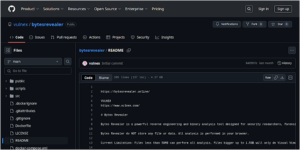How to Report IP Addresses
Spam is a common nuisance for users of the Internet. However, it is not just annoying – these messages may cause substantial harm. While businesses use spam as a cheap way of promotion, criminals send it to snatch sensitive data. Fortunately, there is a quick way to counteract the offenders.
Every source of spam has a unique identifier. An IP address is assigned to any internet-connected device. When it is reported to special watchdog services, senders are blocked automatically. You can learn how to report IP address on https://cleantalk.org/blacklists/report-ip and keep cheeky spammers at bay.

The Purpose
Companies developing such software compile blacklists of fishy senders. These are crucial for anti-spam defense. Any user can contribute to the fight against spam. With basic details (domain/IP), you can add cyber offenders to the database. However, this is just one use of the system.
On the other hand, IP reporting services are handy for companies. They can make sure their marketing efforts will not be futile. Emails from blacklisted sources never reach their target audience. Thus, any sender of sizeable volumes should first check if their IP is legit.
Thirdly, such lists are vital for the advancement of Internet filters. Internet Service Providers (ISPs) never stop improving their barriers and they need to update data. Every complaint added to such blacklist improves the efficiency of cyber protection. The effects are felt across the web.
How Blacklists Work
All sources of active mailing can be identified by their IP or domain. Mail Abuse Prevention Systems track these identifiers and spot suspicious senders. This is not rocket science.
What happens once you hit the ‘Send’ button for an email? Your IP address is detected by the mail system. Servers of the recipient’s side can now verify you as the sender. To do so, they reach out to blacklists. If the IP/domain was previously reported, the message will either go to the junk or be rejected completely – this depends on the number of complaints.
Complaints never stop flowing in. For instance, one of the biggest databases now has 4.8+ million IPs, roughly 13+ million emails, and almost 1.5 million sites. But where does the data come from?
Sources of Information
There are two key sources of blacklisting. These are manual and automatic. On the one hand, users submit complaints. Meanwhile, open relay servers and spamming software are detected by defense systems. Finally, inactive email addresses may function as spam traps. In the first subjective case, common triggers are situations when users:
- do not remember signing up;
- cannot find the unsubscribe link;
- get too many messages, or
- dislike the content generally.

Using Blacklists to Report and Check
Companies should check their IPs regularly. A blacklisted address sends any message to oblivion, regardless of content. Users, on the other hand, can report annoying spammers. Both procedures are simple: open the blacklist, enter the IP/email address, and hit ‘Search’ to launch the check. Alternatively, select an attack type and hit ‘Send report’.
If you like the site, please consider joining the telegram channel or supporting us on Patreon using the button below.




![Cobalt Strike Beacon Detected - 185[.]9[.]146[.]38:80 6 Cobalt-Strike](https://www.redpacketsecurity.com/wp-content/uploads/2021/11/Cobalt-Strike-300x201.jpg)